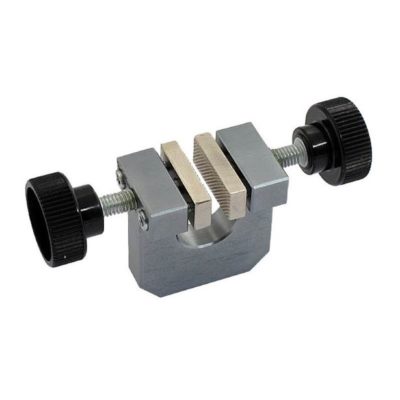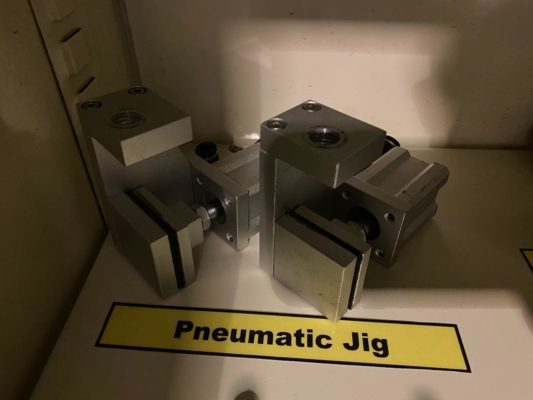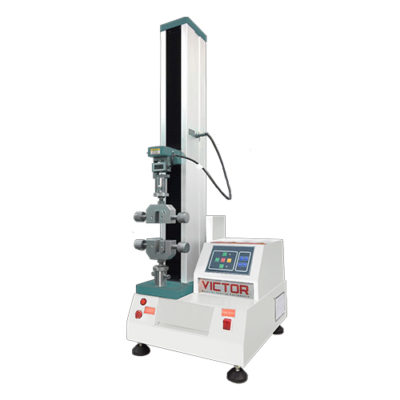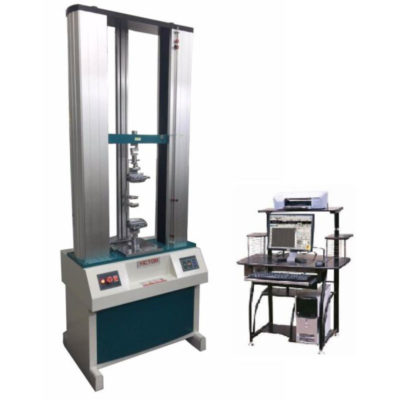ASTM is an international standards organization that is located in the United States of America. The purpose it was introduced to the industry is to publish technical standard agreements for various materials, product, systems and others. Among the ASTM standards that are often use in the industry is ASTM D7003.
ASTM D7003 Test Standard
Description For ASTM D7003
ASTM D7003 is an international test standard design to measure the strip tensile strength and elongation of reinforced geomembranes. This test procedure is very similar to test standard ASTM D5035, except that for reinforced geomembranes as opposed to textile fabrics.
In order to evaluate the full contribution of the reinforcement, testing is perform parallel to the directions of reinforcement. This method is an index test and is not intended for design purposes.
Specimens For ASTM D7003
- Geomembranes
Grips For ASTM D7003
- Mechanical vise grip

Screw action, or manual mechanical vice style grips provide a simple and effective way of gripping test specimens. They are successful and affordable and serve a wide range of applications. The grips feature interchangeable dual-acting jaw faces that can be adjust to handle different specimen thicknesses.
2. Pneumatic grips

Pneumatic grips are excellent fixture choices for this standard. This type of grip is adjustable in order to offset the jaw faces and ensure that the lap joint remains centered in the grips, and the feature quick-change jaw faces that can be easily change to accommodate different materials.
Type of UTM machine
We recommend to use UTM machines with a capacity of 50N-20kN, it depends on the strength of the cord and yarn. We also recommend using smaller machines such as a single column or dual column types.
VEW 220E desktop computer servo testing machine is a new material testing machine that combine with the electronic technology and mechanical transmission, it has accurate load speed, range of force measurement, Has high accuracy and sensitivity for the load, displacement measurement and control. This series of machine using single-space structure, operational space at the bottom, it is mainly apply to test non-metallic and metallic material, which the load is less than 1kN, it has the parameters, such as stress, strain, the control mode of displacement, calculated max force, tensile strength, bending strength, compressive strength, elastic modulus, rate of elongation, yield strength and others.
Main function:
This machine can be apply to test lots of materials in tension, compression, tear, peel (can 90 degrees and 180 degrees) and other mechanical tests, such as rubber, tires, belt, shoes, plastic, film, acrylic, FRP, ABS, EVA, PU, aluminium-plastic pipe, composite materials, waterproof materials, fibers, textiles, wire and cable, paper, gold foil, ribbons, thread, spring, wood, medicine packaging materials, tapes etc.
The machine is design by mechanical-electrical integration, the composition of the force-measuring Sensor, transmitter, microprocessor, mechanism of load drive, computer and color inkjet printer. The high-precision electronic motor can be set to five-speed, the components are connect by plug-way, Floor-standing models, it is taken account of modern industrial design and ergonomics in modelling and Coating. It can be test with all the materials in a stretch, compression, bending, shear, embedded relay, Peeling. tearing, crack, etc, such as rubber, plastics, leather, metal, nylon wire, fabric, paper, aerospace, packaging, construction, petrochemical, electrical, vehicle, etc.
The implementation of standards and standard configuration:
- GB/T4689.20-1996 Measuring fastness of leather’s adhesion
- QB/T2710-2005 Measuring leather’s expansion and the rate of elongation
- QB/T2711-2005 Measuring tear force of leather
- QB/T2712-2005 Measuring leather’s strength and stretch of spherical crack test
Test Procedure
- Prepare at least five test specimens as describe in the standard, paying attention to the alignment of the fiber reinforcement within the geomembrane.
- Specimens should be conditioned and test at standard atmospheric conditions.
- Secure the test specimen in the grips, using a grip separation of 3 in.
- Apply the tensile force at a constant crosshead speed of 12 in/min. End the test at sample break.
Measurements
- Peak Strength
- Elongation (%) at Peak Strength


